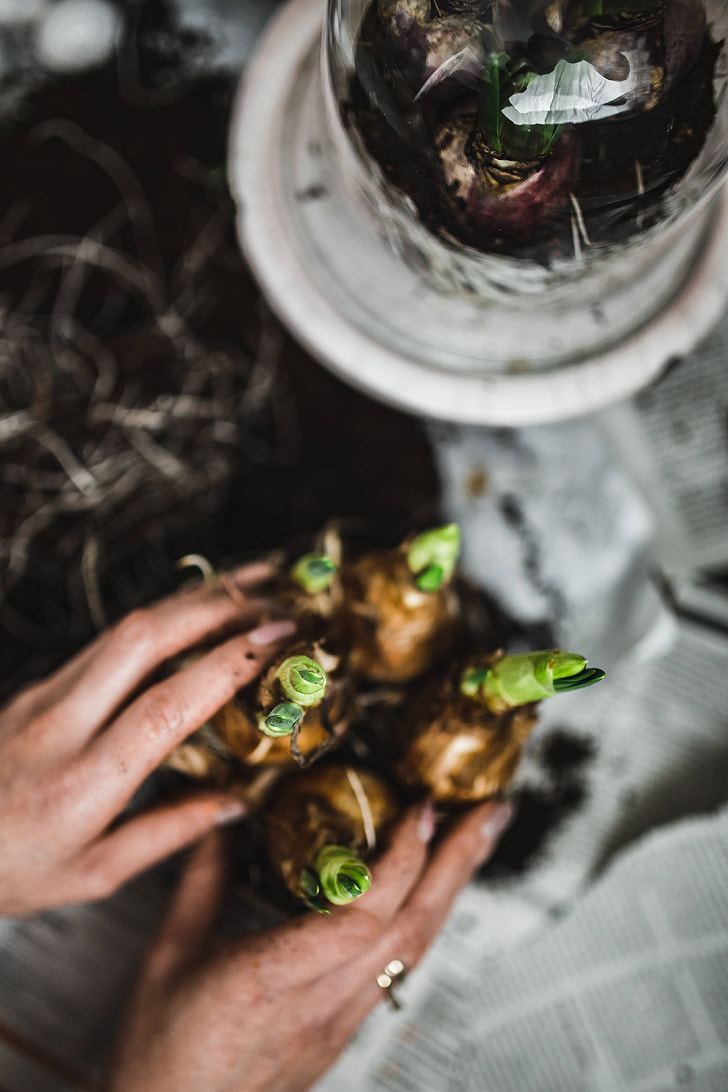
Contents
Learning Outcome Time required Tools or equipment required Summary of the activity What to do Tips how to implement the topic to school curriculumLearning Outcome
The student will learn about the regenerative powers of certain plants. They will be able to regrow many different plants from parts they would normally discard. Thereby food waste will be decreased and moreover they will harvest delicious vegetables in a relatively short span of time.
Time required
10 minutes, overall time: 2-4 weeks depending on the vegetables used
Tools or equipment required
- vegetable scraps
- a sharp knife
- a glass or small bowl
- fresh water
- (optional: a pot, soil – depending on the vegetable)
Summary of the activity
This educational program focuses on teaching students about the regenerative capabilities of certain plants and aims to reduce food waste by demonstrating how various vegetables and herbs can be regrown from discarded parts. The program begins with an introduction to the issue of food waste, prompting students to reflect on their own habits. Students are then provided with information on plant regeneration methods, with detailed instructions for regrowing salads, leafy greens, herbs, onions, garlic, celery, and root vegetables. Implementation options include in-class activities or encouraging students to try regrowing vegetables at home. The program concludes with a reflection on the regrowth projects, allowing students to assess the effectiveness of the process in terms of waste reduction and cost savings. The final stage involves a presentation of the successful regenerations, where students can document the growth and create visual displays or even prepare meals using the harvested vegetables and herbs.
What to do
1. Introduction to the Topic:
Begin by presenting various vegetables and herbs to the students and inquire about their usage patterns, focusing on what parts are typically discarded. This activity aims to raise awareness about food waste. Subsequently, the goal is to persuade students that many of these discarded vegetable and herb parts can be reused, thereby reducing waste.
2. Introduction of Informational Materials and Project Resources:
Provide students with information on plant regeneration and the techniques required for the regrowth of plant parts. Offer step-by-step guidance on handling specific plant groups.
Salads and Leafy Greens:
When dealing with lettuces and leafy greens, such as bok choi, refrain from discarding the tough stem parts. Instead, instruct students to replant these stems to grow new leaves. A fresh cut at the stem's base, followed by placing the plant in fresh water or planting it in soil, will prompt rapid root growth and the emergence of new leaves suitable for consumption.
Herbs:
Basil, mint, and cilantro are often bought pre-cut or potted, with a limited shelf life. Extend the lifespan of potted herbs by considering the anatomy and physiology of the plants during harvest. Encourage students to cut the tips of plants, including two to three nodes beneath a node, to promote bushier growth. These cut tips can be turned into cuttings, planted in water or soil, and eventually grown into mature plants, maximizing crop yield.
Onions and Garlic:
Rather than discarding sprouting garlic cloves or onions, suggest planting them in water or soil. The growing green stems can serve as green onions or garlic scapes, and even the white parts of spring onions can be replanted for rapid regrowth (around 2 weeks).
Celery:
After using the celery stalk, students should avoid discarding the root end. Instead, show them how to plant it to yield a smaller celery plant that can be harvested later. If planted in soil or outdoors, the plant may even fully recover.
Root Vegetables:
Heads of carrots, beets, and radishes are commonly discarded. Instruct students to cut these vegetables, leaving around one centimeter (less for radishes), and plant them in water or soil. While they may not grow new root vegetables, they will produce edible leafy greens suitable for salads, pesto, spreads, or feeding herbivorous pets.
3. Implementation:
Present two implementation options: conduct the activities during class, perhaps after using the vegetables mentioned, or encourage students to try regrowing vegetables from kitchen waste at home. Emphasize that it is the students' responsibility to care for the cuttings to ensure successful growth.
4. Reflection:
Upon completion of the projects, guide students in examining the regrown vegetables and herbs. Have them collect data on the regrowth and encourage self-reflection on whether the process was worthwhile in terms of waste reduction and cost savings.
5. Presentation:
Once a sufficient number of plants have regrown, allow students to harvest their vegetables or herbs. To showcase successful regeneration, guide them in documenting the growth and creating posters featuring before-and-after pictures. Alternatively, a more engaging presentation involves preparing meals using the harvested vegetables and herbs for the class, teachers, or even the entire school, depending on the harvest quantity.
6. Resources for Teachers for Further Information:
additional resources for teachers, such as "20 Vegetables You Can Re-grow" and "Don't Toss It, Plant It!" for further information on regrowing vegetables and reducing food waste.
Tips how to implement the topic to school curriculum
This topic fits into the topic botany and plants during biology class, but could also fit into the home economics classes. It could be used to explain plant regeneration or saving waste.
